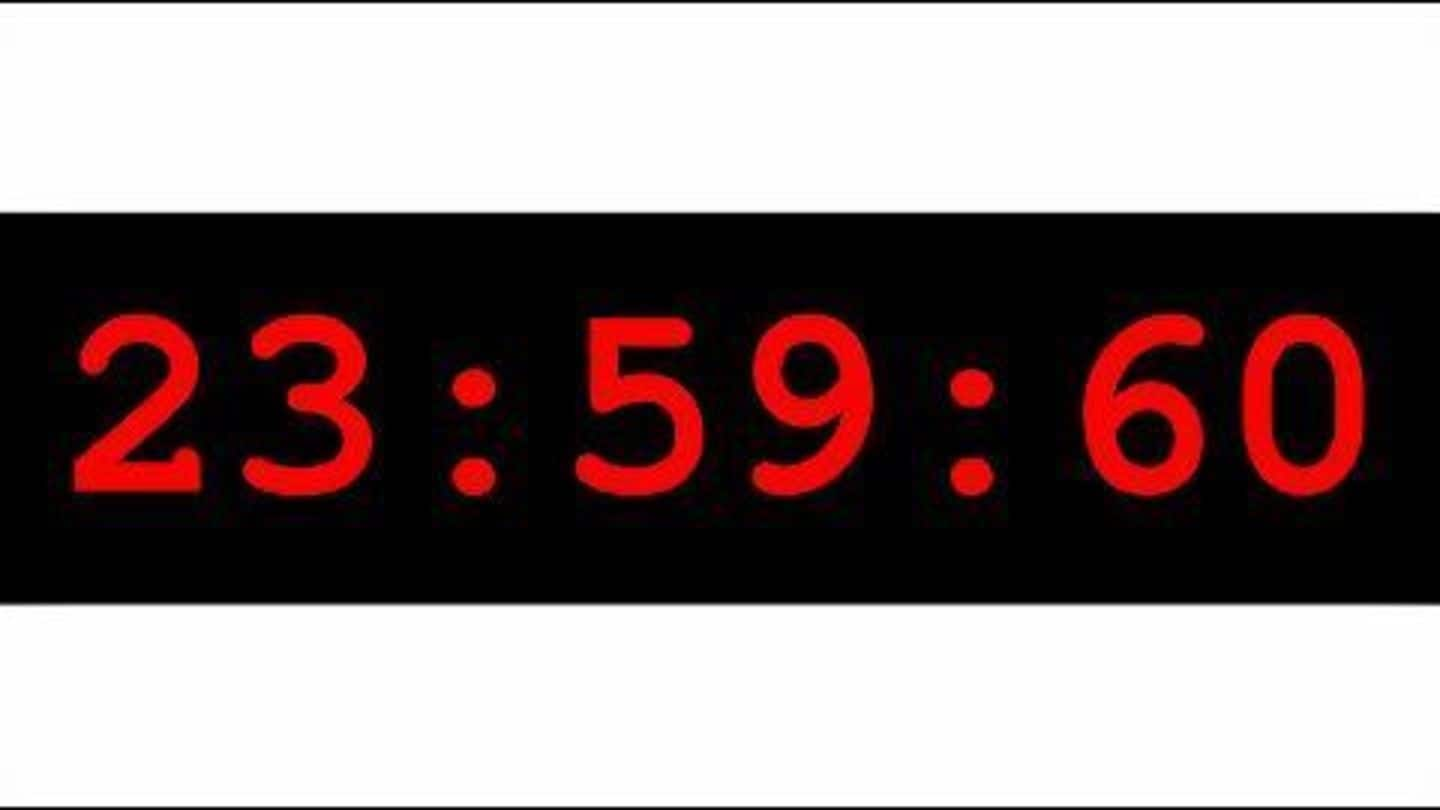
Leap second added to the Indian clock
What's the story
A leap second was inserted into the Indian clock at 5:29:59 hours on 1 Jan'17 to synchronize with Earth's rotational clock. National Physical Laboratory's atomic clock was programmed to add an extra second to 2017 after 23:59:59 on 31 Dec to compensate for an Earth's rotational slowdown. Leap second hardly impacts normal life but is important in fields like satellite navigation, astronomy, and communication.
Introduction
What is 'leap second'?
The extra second added to Coordinated Universal Time (UTC) to synchronize clocks worldwide with Earth's rotation is 'leap second'. UTC's time-scale combines the output of highly precise Atomic clocks worldwide. Astronomical Time or Universal Time (UT1) refers to Earth's rotation. Inserting extra second results in effectively stopping our clocks for that second, giving the Earth the opportunity to catch up with atomic time.
Information
Leap second added simultaneously across the globe
The leap second was inserted simultaneously all over the world at UTC 23:59:59 on 31 Dec 2016. In India, the extra second was added at IST 5:29:59 on 1 Jan 2017, as IST is five hours and thirty minutes ahead of UTC.
Time Difference
Earth's rotation isn't regular, it speeds up and slows down
NPL Director DK Aswal said Earth's rotation isn't regular; sometimes it speeds up or slows down due to factors like earthquakes and moon's gravitational forces resulting in ocean tides. So, Astronomical Time (UT1) gradually falls out of sync with the Atomic Time (UTC). When the difference between UT1 and UTC reaches 0.9 seconds, a leap second is inserted into UTC through atomic clocks worldwide.
Information
37 leap seconds inserted so far
Since 1972, only 37 leap seconds, including the one on 31 Dec, have been added at intervals ranging from six months to seven years. In different countries, in different time zones, the leap second is inserted according to their longitude.
Atomic Clocks
Atomic clocks' margin of error, a second in 100mil years
Atomic clocks are very precise and the margin of error in their functioning is only a second in 100 million years. To be in sync with the Indian Standard Time and Earth's rotational clock, the Indian clock needs to be adjusted after adding the leap second. The Indian atomic clock was synchronized with the atomic clock of France's International Bureau of Weight and Measure.
Corrected Time
Insertion of leap second is done by the NPL
Insertion of the leap second to the Indian clock is done by the NPL under the Council for Scientific and Industrial Research (SCIR). One of India's oldest laboratories - NPL - has five atomic clocks. There are nearly 300 atomic clocks in the world. Those utilizing CSIR-NPL time have received the corrected time after the leap second was added to the Indian clock.
Quote
NPL Director DK Aswal's statement
"The leap second adjustment is not so relevant for normal everyday life. However, this shift is critical for applications requiring of time accuracies in the nanosecond, which are critical in the fields of astronomy, satellite navigation, communication networks."